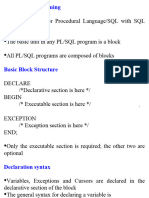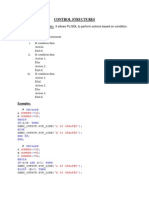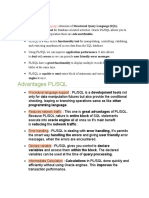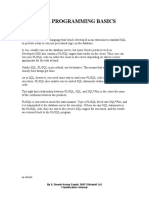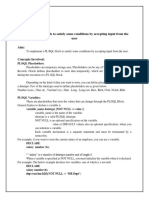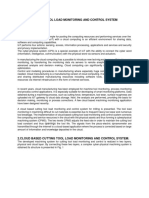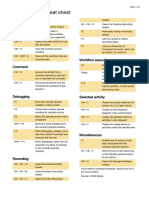0% found this document useful (0 votes)
16 views81 pagesUpdated PLSQL
The document provides an introduction to PL/SQL, highlighting its procedural capabilities and advantages over standard SQL, including data manipulation and transaction processing statements. It covers the structure of PL/SQL blocks, data types, operators, control statements, and the creation of database objects like procedures, functions, and triggers. Additionally, it includes examples of PL/SQL code demonstrating various functionalities such as conditional and iterative control statements.
Uploaded by
seemahpatil2024Copyright
© © All Rights Reserved
We take content rights seriously. If you suspect this is your content, claim it here.
Available Formats
Download as PPT, PDF, TXT or read online on Scribd
0% found this document useful (0 votes)
16 views81 pagesUpdated PLSQL
The document provides an introduction to PL/SQL, highlighting its procedural capabilities and advantages over standard SQL, including data manipulation and transaction processing statements. It covers the structure of PL/SQL blocks, data types, operators, control statements, and the creation of database objects like procedures, functions, and triggers. Additionally, it includes examples of PL/SQL code demonstrating various functionalities such as conditional and iterative control statements.
Uploaded by
seemahpatil2024Copyright
© © All Rights Reserved
We take content rights seriously. If you suspect this is your content, claim it here.
Available Formats
Download as PPT, PDF, TXT or read online on Scribd
/ 81


